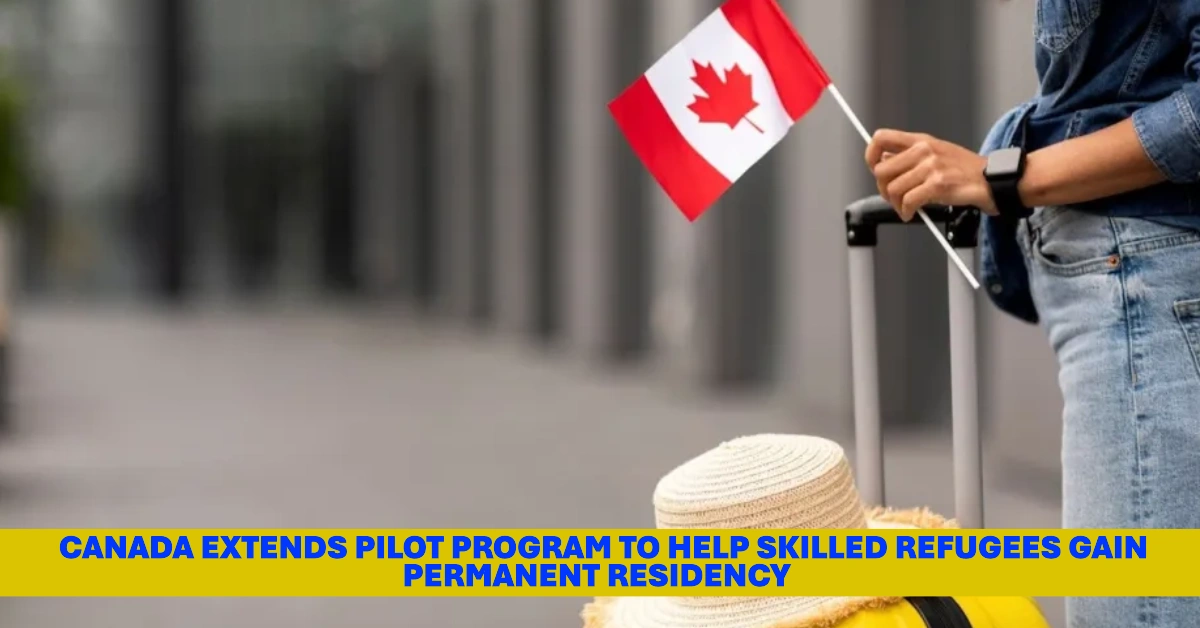The Canadian government has extended its Economic Mobility Pathways Pilot (EMPP) program until December 31, 2025, giving more skilled refugees and displaced individuals a chance to become permanent residents through an economic immigration route.
The Immigration, Refugees and Citizenship Canada (IRCC) confirmed that this pilot helps address urgent labour gaps by recognizing the social and economic potential of displaced people who have the skills Canadian employers need.
Table of Contents
What Is the EMPP and Who Benefits From It?
A Unique Immigration Pathway for Refugees
The EMPP stands out as one of Canada’s first refugee labour mobility programs. Unlike traditional resettlement programs, it creates safe and legal channels for refugees and people in similar vulnerable situations to enter Canada based on their skills and work experience.
Since its launch, the EMPP has brought in workers for key sectors such as:
- Healthcare, accounting for over 30% of all EMPP admissions
- Construction
- Food services
From 2019 to March 2025, a total of 970 people have entered Canada through this program.
Why Canada Is Extending the EMPP
Meeting Labour Market Needs in Essential Sectors
The government’s decision to extend the program reflects the need to support critical industries and help employers facing talent shortages.
In a public statement, IRCC said:
“The extension will allow more workers in essential sectors such as healthcare to benefit from this permanent residence pathway and continue contributing to our economy.”
The annual application cap for EMPP’s job offer stream in 2025 is set at 950 applications.
This move is part of Canada’s wider immigration strategy aimed at:
- Supporting economic growth
- Meeting regional labour demands
- Helping newcomers settle successfully in communities across the country
Immigration Targets Are Shrinking — But EMPP Stays
While Canada is expanding EMPP, it is simultaneously lowering its overall permanent residency targets. According to a 2024 government plan, the yearly immigration targets are set to decline:
- 2025: 395,000
- 2026: 380,000
- 2027: 365,000
These cuts mark a significant shift from the previous policy under former Prime Minister Justin Trudeau, who welcomed up to 500,000 permanent residents per year.
Political Debate: Immigration Cuts vs Labour Needs
Conservatives Call for Tighter Immigration Controls
Opposition leader Pierre Poilievre of the Conservative Party has voiced strong criticism of current immigration policies, claiming that uncontrolled population growth is placing pressure on:
- Public services
- Housing
- National infrastructure
He’s also called for strict limitations on refugee programs, international students, and foreign workers.
“We need lower levels and an end to the abuse of refugee and foreign worker programs,” he said.
A Country Facing Contradictions
Despite calls for immigration cuts, Canada’s economy continues to rely on skilled newcomers, including refugees, to fill workforce gaps, particularly in aging and rural regions.
Few Requirements Needed to Maintain Canada Permanent Residence
IRCC Extends Public Policy for Immigration Medical Examination Exemptions until 2029
4 New Pathways to Permanent Residency in Canada Set to Launch in 2025
Final Thoughts
The extension of the EMPP until 2025 is a clear sign that Canada wants to strike a balance: lower immigration numbers overall, but more focused support for those who bring needed skills.
For skilled refugees and displaced persons with professional qualifications, this could be a life-changing opportunity — and for Canada, it may be a smart move to tackle growing economic demands without overwhelming infrastructure.
